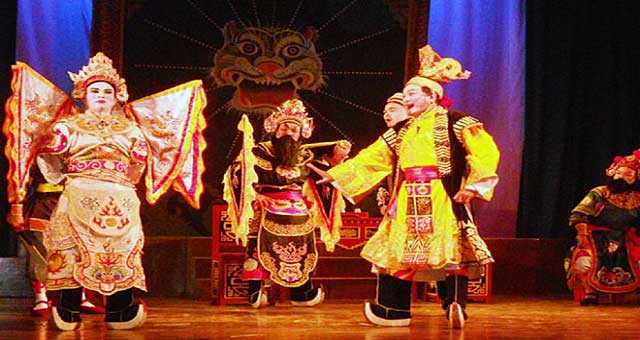Central Da Nang city has found a new way to make “tuong” (classical dramas) more accessible to the public: performing it on streets.

Tuong excerpts are being performed along the eastern bank of the Han River, a popular destination for both city dwellers and tourists.
The performances also include make up demonstrations, drawing paper masks and putting on tuong costumes.
This pilot programme, organised every Sunday evening through this September, is intended to popularise and uphold the art, recently recognised as part of the national intangible cultural heritage.
Tran Ngoc Tuan, Director of Da Nang’s Nguyen Hien Dinh “tuong” Theatre, said at first, passers-by may stop to watch tuong performances for just a few minutes out of curiosity, but their interest gradually develops.
Tuong performances need to be combined with other street activities such as night markets and food selling to optimise the efficiency of the programme, he noted, believing it the right way to improve night-time entertainment activities, ultimately improving local spiritual lives and attracting tourists.
The Vietnamese classical drama is said to date back hundreds of years. Along with other traditional performing arts like cheo (traditional opera) in the north and cai luong in the south, tuong is a vital component of the Vietnamese spirit and character.
Tuong developed from a folk art into a royal art. Its themes include loyalty to the monarch and patriotic duty - which define the play's structure, features, language, music, colour, struggles and the personalities of the characters.
Performances consist of highly stylised singing, dancing and music that are filled with symbolism.